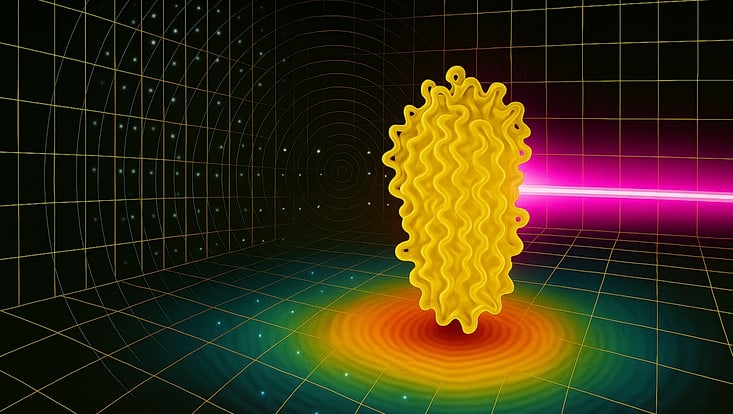Imaging of Matter
Tracking enzymes in action: new 5D crystallography method captures protein dynamics at physiological temperatures
30 July 2025

Photo: Eike Schulz, Pedram Mehrabi mit ChatGTP
A research team from Hamburg has developed a novel method that allows for time-resolved structural studies of proteins across a wide temperature range. The team reports the new approach, called 5D serial synchrotron crystallography (5D-SSX), in Nature Communications. It enables the collection of temperature-resolved structural snapshots during enzymatic reactions and provides insights into protein function under near-native conditions.
Temperature plays a key role in modulating enzyme activity and protein dynamics. Yet, the majority of high-resolution protein structures are still obtained at cryogenic temperatures, far from physiological conditions. Time-resolved crystallography, which can reveal the structural basis of catalysis, allostery, and ligand binding, is typically conducted at ambient temperatures, which can miss conformational states that become visible at physiological temperatures.
The interdisciplinary team - comprising scientists from the University of Hamburg and the Cluster of Excellence “CUI: Advanced Imaging of Matter”, the University Medical Center Hamburg-Eppendorf, the Max Planck Institute for the Structure and Dynamics of Matter, and the European Molecular Biology Laboratory Hamburg - has now established a workflow to overcome these limitations. Their 5D-SSX method allows researchers to perform serial synchrotron crystallography at defined time points and at temperatures ranging from below 10 °C to above 70 °C.
New perspectives for biomedical research
In proof-of-concept experiments, the team demonstrated temperature-dependent enzymatic turnover in both the mesophilic β-lactamase CTX-M-14 and the thermophilic enzyme xylose isomerase. The method reveals how reaction kinetics and conformational landscapes are modulated by temperature and allows researchers to investigate enzyme mechanisms under biologically relevant conditions.
“Our method offers a versatile platform to explore enzyme dynamics as a function of time across a wide temperature range - in other words, temperatures that the enzymes naturally exist in – like the human body.” says Dr. Pedram Mehrabi, Emmy Noether group leader at the University of Hamburg.
Cluster researcher Dr. Eike C. Schulz, heading a BMFTR & ERC funded research group at UKE, adds: “5D-SSX opens up completely new perspectives for biomedical research. Understanding the dynamics of proteins under realistic conditions is crucial, especially when developing antibiotics or elucidating disease-relevant mechanisms.”
Citation
E. C. Schulz, A. Prester, D. von Stetten, G. Gore, C. E. Hatton, K. Bartels, J.-Ph. Leimkohl, H. Schikora, H. M. Ginn, F. Tellkamp & P. Mehrabi
Probing the modulation of enzyme kinetics by multi-temperature, time-resolved serial crystallography
Nature Communications 16, 6553 (2025)


